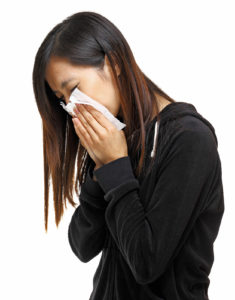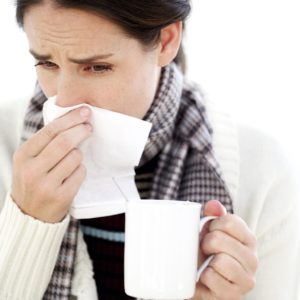Can Clogged Ears be Caused by Allergies?
 The simple answer to this question is yes.
The simple answer to this question is yes.
Eustachian tube dysfunction is a condition where the the eustachian tubes of the middle ear do not open and close the correct way. The eustachian tubes are small tubes that go from the middle ear (the part of the ear behind the eardrum) to the back of the throat. There is one eustachian tube for each ear. The eustachian tubes are about 1 1/2 inches long and regulate the air pressure between the middle ear and the atmosphere outside the ear. The eustachian tubes also serve the purpose of draining fluid and mucus from the middle ear. Normally, the tubes are closed. When there is an increase in atmospheric pressure ( e.g., high altitudes, deep water) people typically will intentionally swallow, yawn, or chew gum in order to force the eustachian tube open which will cause an equalization in pressure. If someone is unable to equalize this pressure difference, one may experience ear pain, a clogged or blocked feeling of the ears, decreased hearing, ringing of the ears (tinnitus), a fullness of the ears, popping of the ears, and/or dizziness.
There are a variety of causes of eustachian tube dysfunction. Swelling of the eustachian tubes can occur due to allergies (i.e., allergic rhinitis, hay fever), upper respiratory infections (URI’s), and sinus infections. The swelling causes the tubes to stay closed, preventing them from opening with the normal everyday functions such as swallowing and yawning. As a result, a pressure difference occurs between the middle ear and the outside atmospheric pressure causing the symptoms of eustachian tube dysfunction to develop. One may complain of ears that are painful, blocked, full, popping, etc. Fluid may also collect in the middle ear which can further increase one’s symptoms. In addition, the fluid can get infected which will often lead to ear infections (otitis media). Note that the length of the eustachian tubes is shorter, and thus more easily blocked, in children than in adults, predisposing them to a higher risk of ear infections; this is a reason to see a pediatric allergist here in McLean, Manassas or Washington, DC as soon as possible. /2015/08/04/can-clogged-ears-be-caused-by-allergies/ /2015/08/04/can-clogged-ears-be-caused-by-allergies/ /2015/08/04/can-clogged-ears-be-caused-by-allergies/ Cigarette smoking, enlarged adenoids, and obesity are other factors that can predispose and/or cause eustachian tube dysfunction.
As mentioned above, allergies play an important role in causing eustachian tube dysfunction. Allergic rhinitis (hay fever) is a condition where there is inflammation and swelling in the nasal and sinus regions due to an allergen such as pollen, dust mites, molds, and animals. It is the swelling component of this allergic condition which contributes to the symptoms of eustachian tube dysfunction.
The board certified allergists at Black & Kletz Allergy have been diagnosing and treating children and adults with “clogged ears” for over 50 years in the Washington, DC, Northern Virginia, and Maryland metropolitan area. Diagnosing and treating the underlying condition, which often is due to allergies, is the primary way to alleviate the “clogged ears.” There are numerous allergy medications (i.e., decongestants, nasal corticosteroid sprays, antihistamines), as well as allergy immunotherapy (allergy shots) that can be utilized in order to treat and/or prevent “clogged ears.” If you suffer from these symptoms or other allergy symptoms, please call any one of our 3 convenient office locations in the DC metro area. We have offices in Washington, DC, McLean, VA, (Tyson’s Corner, VA), and Manassas, VA. All 3 offices have on-site parking and the Washington, DC and McLean, VA locations are Metro accessible. You can also click Request an Appointment and we will respond within 24 hours by the next business day. Black & Kletz Allergy is dedicated to help you get relief from your allergy symptoms in a caring professional environment.

 As
As  Also read:
Also read:  When we have frequent nasal congestion, runny noses, sneezing fits, and itchy, red, watery eyes, the common dilemma arises: Is it a sinus infection vs. a cold? How do I treat either?
When we have frequent nasal congestion, runny noses, sneezing fits, and itchy, red, watery eyes, the common dilemma arises: Is it a sinus infection vs. a cold? How do I treat either?